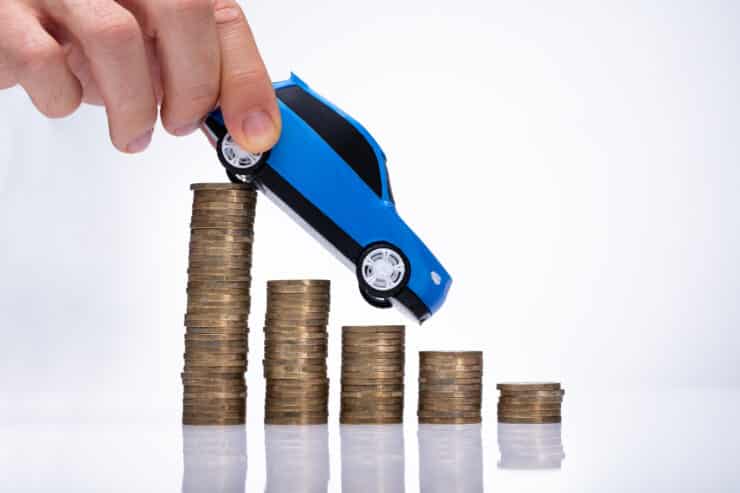Ever thought about refinancing your car loan to capture a lower interest rate? It can be done. Unlike refinancing a home mortgage, the process is quick and easy, with relatively low out-of-pocket costs. Typically, it is just the transfer of title.
Higher Score, Lower Monthly Payments
So, if it’s that simple, why aren’t more people doing it?
One reason is that the difference in your monthly payments once you refinance isn’t nearly as significant as with a home mortgage since the amount borrowed is less, and car loans are shorter-term loans. But, in certain circumstances, an auto refinance might be worth looking into.
Reasons to Consider Auto Refinance
- You’ve significantly improved your credit score since you took out your original loan.
- If you didn’t shop around for the best rate on financing the first time.
Auto Refinance Example
To provide some context, let’s look at an example.
5-year, $20,000 loan two years ago at 12% interest, and your monthly payment is $445.
- 10% interest rate. Refinancing the remaining amount – about $13,400 – into a three-year loan now, at 10% interest, would drop your payment by about $13 a month. That means you’d save a little more than $400 over the life of the loan, and while that’s certainly enough for the refinancing to pay for itself, that amount might not be enough to get you excited.
- 5.34% interest rate. That would put you saving closer to $40/month or $1,440 over the remainder of the loan — some serious cash.
Steps for Refinancing
1. Understand the Back Story
There are a couple of reasons why your rate might be higher than it should be.
- The first is your credit score.
- The second could be an inflated rate if you financed through a dealer.
Shop Around. These days, internet-savvy consumers know how much they should be paying for cars down to every last option. That’s trimmed profit on cars to dealers who make it up in profit on both financing and servicing your vehicle. That’s why it’s just as important to shop around for financing for your car as for the car itself. You’ll want to walk into the dealership having already secured financing from at least one credit union or bank.
2. Mind Your Score
In the months leading up to your loan application, keep in mind that your credit score will directly affect your interest rate. So, be extra careful about paying your bills on time and keeping credit card usage at a minimum (preferably at 30% of your available balance or less).
Focus on the Goal. Also, don’t apply for other cards or loans if you know a biggie — like an auto loan or mortgage — is in your near future. And don’t close old credit cards you’re not using right now. All of these moves will help make sure your score doesn’t drop before you apply.
3. Find Your Lender
Once you’re ready to refinance, start rate shopping at many banks and credit unions. Also, if you took dealer financing and think you could get a better rate, you can refinance immediately after you take out the original loan. Not all lenders who offer auto loans will also offer refinancing, so check out the offerings at your bank or a local credit union.
4. Don’t Stretch Your Payment Term
Extending the life of your loan may indeed lower your monthly payments, but it will cost you more in interest over time — even if you’re able to lower your interest rate. You may be tempted to extend, but your new loan should never be longer than what was remaining on the origin






